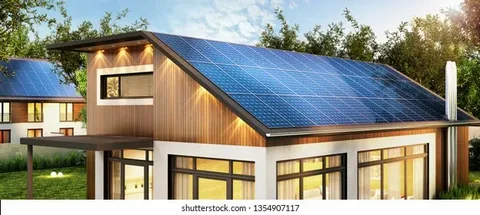As solar energy continues to grow in popularity, many homeowners are considering the switch to solar power. However, with so many options available, it can be overwhelming to choose the right solar system for your home. To make this decision easier, we’ve created The Ultimate Checklist for Choosing a solar system for home—a comprehensive guide to help you evaluate all the important factors before investing.
Understand Your Energy Needs
Before selecting a solar system, you need to assess how much energy your household consumes. Check your electricity bills from the past 12 months to get an accurate average of your monthly usage in kilowatt-hours (kWh). This information is crucial because it will determine the size and capacity of the solar system you need.
Evaluate Your Roof’s Suitability
Not every roof is ideal for solar panels. When going through The Ultimate Checklist for Choosing a Solar System for Your Home, consider the following about your roof:
- Orientation: South-facing roofs typically receive the most sunlight.
- Angle: A tilt between 15 to 40 degrees is usually optimal for solar panel efficiency.
- Shade: Trees, buildings, or other obstructions that cast shadows can reduce the system’s performance.
- Condition: Your roof should be in good shape to support solar panels for years to come.
Choose the Right Type of Solar Panels
There are several types of solar panels, each with its own advantages and drawbacks:
- Monocrystalline: High efficiency, sleek design, but usually more expensive.
- Polycrystalline: More affordable but slightly less efficient.
- Thin-film: Flexible and lightweight but generally less durable and efficient.
Understanding these options helps you match your budget and energy needs with the right technology.
Decide on Grid-Tied vs. Off-Grid Systems
Do you want your system connected to the utility grid or completely independent?
- Grid-tied systems allow you to sell excess energy back to the utility company and typically cost less upfront.
- Off-grid systems rely on batteries for storage and are ideal for remote locations but come with higher installation and maintenance costs.
This decision is a key step on The Ultimate Checklist for Choosing a Solar System for Your Home because it affects overall system design and expenses.
Review Warranty and Maintenance Options
Solar systems usually come with warranties on panels, inverters, and installation. Look for:
- At least 20-25 years warranty on panels.
- 10 years or more warranty on inverters.
- Clear maintenance plans and support services.
Choosing a reliable provider with good after-sales service ensures your investment is protected.
Consider Your Budget and Financing Options
Finally, evaluate how much you can invest and explore financing options such as solar loans, leases, or power purchase agreements (PPAs). Additionally, check for government incentives, tax credits, and rebates that can significantly reduce the upfront cost.
By following The Ultimate Checklist for Choosing a Solar System for Your Home, you can make an informed decision that maximizes your savings and energy independence. Solar power is a smart, sustainable choice, and with careful planning, you’ll enjoy the benefits for decades to come.

